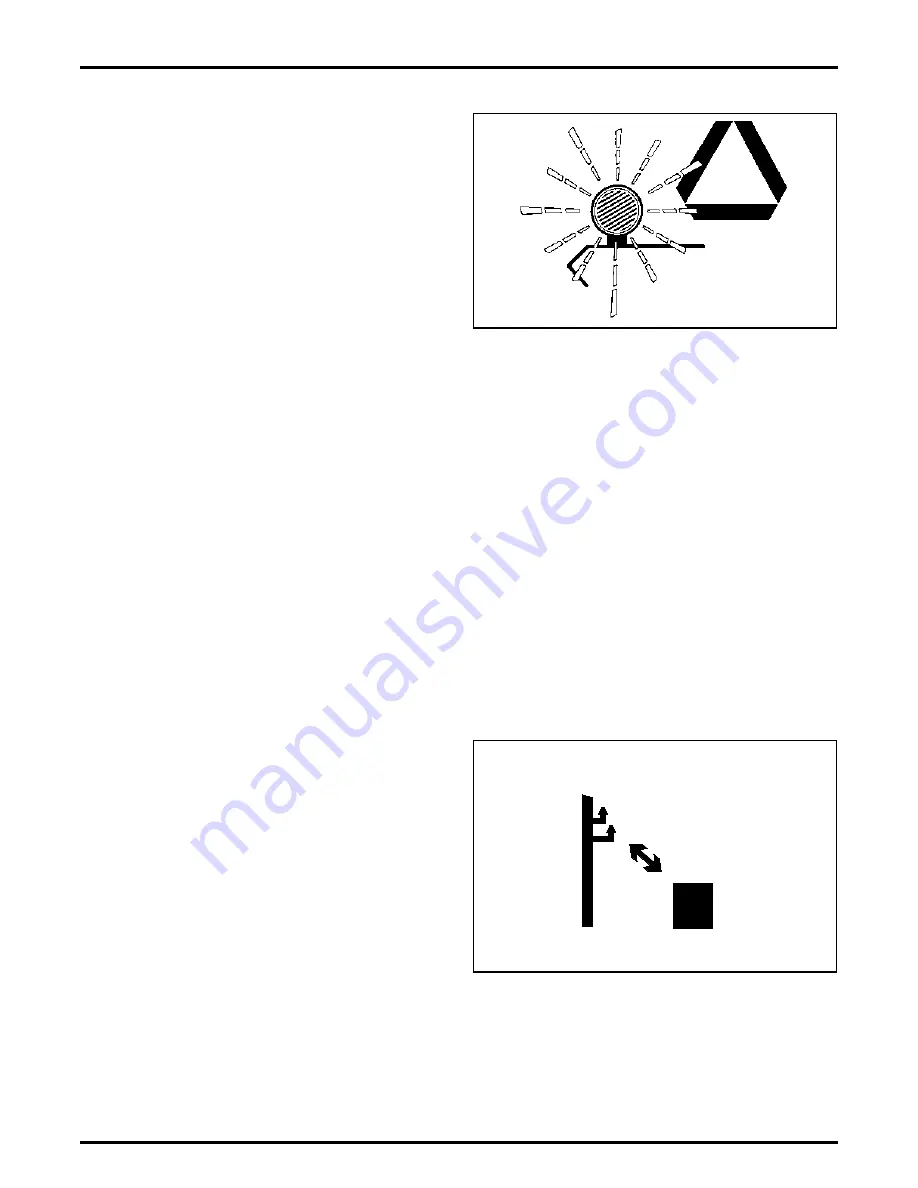
Safety
01-6
79034308 B Rev.
ROAD AND HIGHWAY OPERATION
FIG. 6: COMPLY
with your state and local
LAWS
and
REGULATIONS
governing highway safety when moving
machinery on a highway.
•
ALWAYS
travel at a reasonable speed for road or
field conditions. Whenever possible, avoid traveling
near ditches, embankments and holes. Reduce
speed when turning crossing slopes, and or rough,
slick or muddy surfaces.
•
AVOID
transporting the machine on the road with
grain in the tank. Extra caution and slower speeds
need to be used if the machine must be transported
with grain in the tank.
•
ALWAYS
reduce your speed
GRADUALLY
to
maintain adequate weight for stability on the rear
(steering) wheels whenever:
a.
Slowing the
ENGINE
speed.
b.
Slowing the
HYDRO-TRACTION
drive.
c.
Applying the
BRAKES
.
•
BRAKES
must be locked together during road travel.
NEVER
apply individual wheel brakes for turning
assist during road or highway operation.
•
TOWING
of the machine is NOT recommended. But
if the machine must be towed, refer to the Operator
Manual for proper towing procedures.
•
ROTATE
the header extremity lights. Use headlights,
flashing warning lights, taillights and turn signals, day
and night, unless prohibited by local law. Make sure
lights, reflectors and SMV emblem are installed, in
good condition and wiped clean.
•
CHECK
clearance
CAREFULLY
before driving the
machine and header under electric lines, over
bridges, or other obstructions along the highway.
FIG. 7:
Watch for overhead wires and other obstructions.
Avoid contact with electrical power lines. Contact with
electrical power lines can cause electrical shock, resulting
in very serious injury or death.
FIG. 6
S-1025
FIG. 7
D-15022
Find manuals at https://best-manuals.com
























